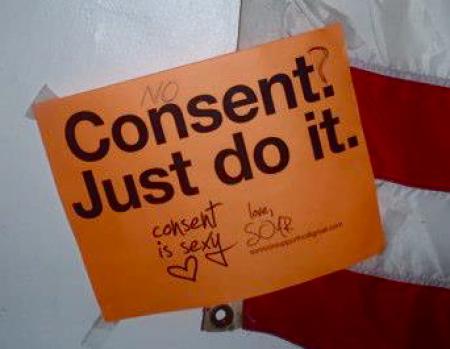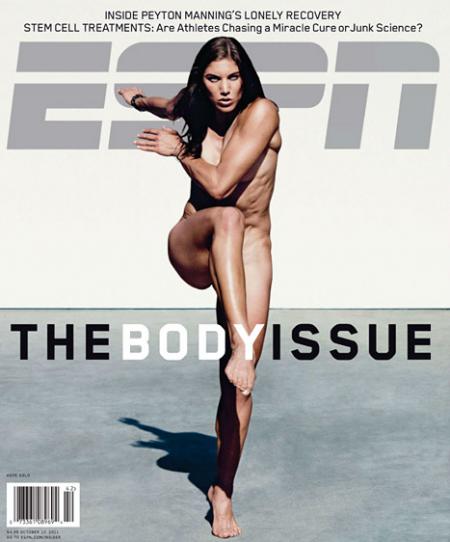Serendip is an independent site partnering with faculty at multiple colleges and universities around the world. Happy exploring!
jmorgant's blog
Sexual Misconduct Policy Reform at Haverford College
“Rights
And
Pride
Equal
Resistance
Ability
Power
Equality”
Source: Pennsylvania Coalition Against Rape
Haverford College is a small liberal arts college that prides itself on its community, Quaker roots, and commitment to social justice. Upon matriculation in 2008, however, I was dismayed by what I perceived to be a lack of resources for survivors of sexual assault* on campus as well as the broader absence of conversation about these issues. In the winter of 2009, two other Haverford women and I started a student-run support group called Survivors of Assault and Rape (SOAR). Since then, a small group of committed Haverford students has embarked on a quest to instigate rape and sexual assault policy reform. Although we have faced frustrating bureaucratic barriers, what has at times been perceived as resistance and a lack of support on the part of the campus administration, Haverford has substantially altered its rape and sexual assault policies in the last three years. This paper is the continuation of a number of pieces that I have written about rape and sexual assault in colleges (see “Consent is Sexy at Haverford? Not Yet”). I hope that this paper may serve as a resource for other college students hoping to change the rape and sexual assault policies on their campuses.
"Consent is Sexy" at Haverford: Not Yet
I’d been working on another paper for this web event, one linking human rights abuses to sexual assault, and examining the relevance of transitional justice mechanisms. After the past three days, however, I feel compelled to share some of what’s been going on in my quest to build “right relationships” between people – students, administrators, faculty, and staff – on Haverford’s campus.
The Context: Rape and Sexual Assault at Haverford College
Haverford is mandated by the Clery Act to report crime statistics, including sex offenses. According to Haverford College’s 2011 Security & Fire Safety Report, there were reported 4 forcible sex offenses in 2008, 7 forcible sex offenses in 2009, and 8 forcible sex offenses in 2010. The same report listed 0 non-forcible sex offenses for the same years (but does not define how it distinguishes between forcible and non-forcible sex offenses).
(Source: 2011 Fire & Security Safety Report, Haverford College, 2011. Page 6.)
The Security Report goes on to acknowledge, “According to the U.S. Department of Justice, crimes of sexual assault are among the most underreported of all crimes. This is especially true on college and university campuses.” It continues, “Any reported rape or sexual assault will be treated confidentially with concern and sensitivity…All victims of campus crime are strongly encouraged to report the incident.”

In thinking about (re)constructing "right relationships"...
This short music video really spoke to me. Not only is it beautiful, but the central premise - rebuilding what has been lost - made me think about the concept of a "right relationship" - is it possible to rebuild what has been destroyed, to construct an ice castle from a puddle of water?
OUT.
I wasn't able to be in class last Tuesday, which I was especially disappointed about after our class on 11/15. I've read the class talking notes and people's blog posts, and there are a couple people I want to respond to, and a couple points I want to make in general.
I left class two weeks ago feeling totally drained - not only because of the things we'd talked about, many of which touch me deeply - rape&sexual assault, Ensler's Huffington Post piece, activism - but also because I felt totally unprepared to be talking about such things so publicly, and also, to be honest, pretty offended. I'm not trying to speak for others here, but I thought that it was grossly inappropriate to take a student's quote from this website and have them read it aloud in class without any warning. As some students (and Kaye) have already pointed out, to say something out loud, in public, is completely different from writing it (semi-anonymously?) online. I felt that in some ways, a community was created as a result - but I also think that it was very insensitive. Kaye acknowledged that if she and Anne had warned us beforehand that we would be discussing rape&sexual assault, people may not have shown up, or had their guard up. It doesn't matter. That's our right.
Diffracting Butler and Arendt Through Incan Astronomy
Tonight at Bryn Mawr College, Judith Butler, in her second lecture of the Flexner Lecture series, responded to Hannah Arendt’s assertion that action and speech create a political space between participants; such spaces are not constituted by individuals, but rather by the interactions between many of them. The body provides the means to see one’s own perspective but also displaces the singular perspective because bodies do not act alone; rather, action (and meaning) emerges from the “between.” We appear to others in ways that we do not know, and are politically constituted by perspectives unbeknownst to us. Butler responded by acknowledging the truth in Arendt’s conception of political space, but also that material supports are necessary for action. In the spirit of striving to be interdisciplinary, I found myself relating Arendt and Butler’s ideas about political space to Incan astronomy. As I learned upon visiting Inca ruins in Cusco, Peru during my semester abroad last spring, our tour guide taught us that the Inca looked for constellations not by imagining shapes around the stars, as the Greeks did, but rather by seeing the black space between the stars. The pinpoints of light acted as the “supports,” but the image could not be seen through just one single star. Rather, through the existence and placement of many individual stars, the Inca saw meaningful images between them.
"Blue-Vested Vultures:" A Summer as a PPSP Clinic Escort
I was a patient escort for Planned Parenthood of Southeastern Pennsylvania (Westchester) the summer after my freshman year of college, and therefore related on a very personal level to one of the videos we watched for class this week. I'm from Massachusetts, where buffer zones are the law, so protestors cannot be within 35 feet of a family planning clinic. The situation at PPSP therefore shocked me. In the attached image, there is a white line in the lower-left hand corner. This was the line that protestors could not cross. It was literally a foot from the back of where the cars would pull in. As a result, when we walked in patients (most of whom were visiting Planned Parenthood for birth control, STD testing, or other preventive services), we would end up standing several feet from protestors screaming at us and the patients. Planned Parenthood has a non-engagement policy, so we were not to look at the protestors in the eye, nor respond to them, nor provoke them in any ways. I witnessed first-hand the racist tactics the protestors used to try to reach out to the patients: if someone looked remotely Hispanic, they would shout in broken Spanish ("el aborto mata!") African-Americans who entered the clinic were told that Planned Parenthood was conducting a Holocaust against black babies, specifically targeting black mothers.
A response to “Miss Representation 8 min. trailer:” Changing gender stereotypes by increasing visibility of female athletes
The trailer for Miss Representation by filmmaker Jennifer Siebel Newsom describes the power of the media, acknowledging that people learn more from it than any other single source of information. The media is the primary force that shapes our society: “politics, national discourse, and children’s brains, lives, and emotions” (Jim Steyer, CEO, Common Sense Media). Upwards of one billion people use the Internet every day (Marissa Mayer, Vice President, Consumer Products, Google); images are widely available and accessible without restrictions.
The messages disseminated by the mainstream media are pervasive, and more often than not emphasize and perpetuate harmful gender stereotypes. According to Miss Representation, women hold only 3% of clout positions in telecommunications, entertainment, publishing and advertising and comprise just 16% of all writers, directors, producers, cinematographers and editors. Because women are generally not the ones deciding how they are represented in the media, they are often shown as sex objects, valued by their looks rather than their achievements. As a result, “girls are taught that their value is based on how they look, and boys are taught that that’s what’s important about women” (Jean Kilbourne, EdD, Filmmaker, Killing Us Softly).

"As Nature Made Him?" Are you sure?
Note: S. Yaeger, I wrote this post before I read yours, but I think it relates in many ways to your question about the assertion that intersex people should not be used in the nature/nurture debate.
Both assigned readings for this week (Spanier and Horowitz and Jordan Young) reference the case of David Reimer, who lost his penis in a botched circumcision as an infant, later received sex reassignment surgery. His parents raised him as a girl, giving him estrogen injections and forcing him to imitate stereotypically female behaviors despite his resistance and unhappiness. The book written about this period of his life, “As Nature Made Him,” was one that I was thinking about on Tuesday night during our conversations about sex, gender and sexuality. (I highly recommend this book for everyone in this class! A review of it by Natalie Angier for the NYTimes written in 2000 can be found here). Despite the way he was raised, by late adolescence David identified as a heterosexual male, eventually undergoing a double mastectomy and marrying a woman (he sadly committed suicide in 2004).
Animal behavior & gender/sexuality norms
The video “Nature: What Females Want…and What Males Will Do” featured clichéd, even asinine commentary about animals’ reproductive behavior. The DVD showed heterosexual animal interactions punctuated with quotes from biologists and the narrator such as “Males will do anything they can do copulate with a female – we know that!” In a look a male geladas, whose ability to withstand sub-0 nighttime temperatures is demonstrated by the deep red of their chest patches, were described as “Pretty tough!” Female fireflies that mocked another species’ light patterns in order to eat the males were described as “true femme fatales.” In reference to jumping spiders, a biologist explained, “Females are looking for complex things; they want more and more, so males have evolved these dances.” Red-sided garter snakes that were forcibly inseminated would in a day or so “have another chance at love.” This constant commentary, while meant to be entertaining, was not only distracting but often times offensive because of the way it demonstrated stereotypes about gender and sexuality.
Is rape biological?
I was fascinated by the concept of “cryptic choice” introduced in the video “Nature: What Females Want…and What Males Will Do.” Female red-sided garter snakes are rendered immobile by males competing to inseminate her. They have, however, evolved a means of defense against forced copulation: they can choose which of the snake’s sperm will fertilize their eggs. Another example of “cryptic choice” is seen in ducks’ reproductive systems: they twist opposite ways to make reproduction more difficult. A third of ducks’ copulations are forced, but they produce only 3% of the young. Explained the narrator, “Evolution has given females the edge.” Last week, my psychology-major roommate sent me an article called “Women’s Avoidance of Rape” which, like the video, acknowledged that “Sexual coercion and rape have been documented in many different species.”


